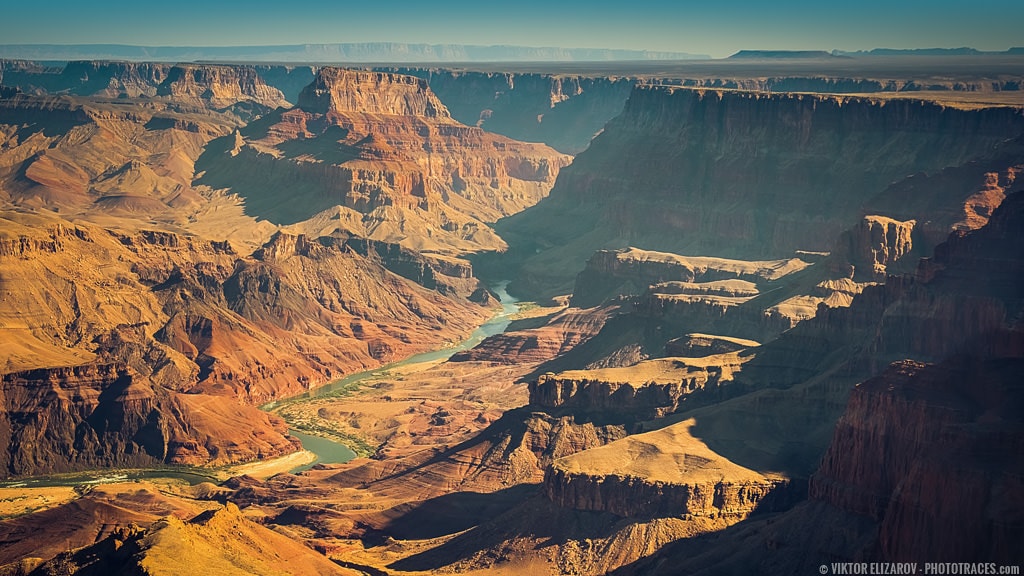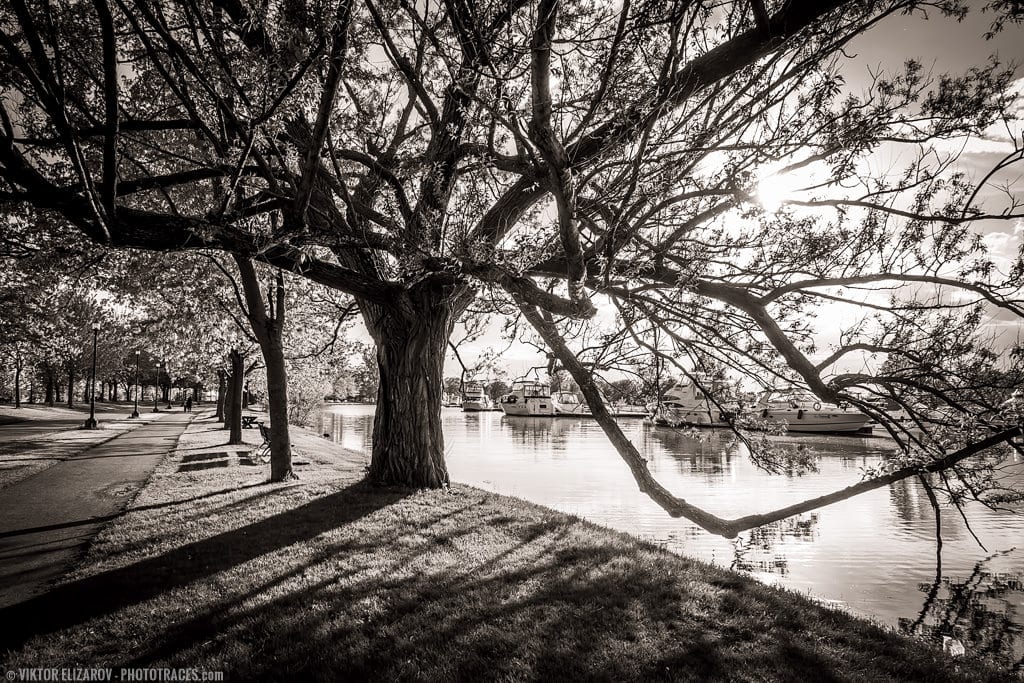Today, I will tell you everything you need to know about diagonal lines in photography.
Because diagonal lines are one of my absolute favorite composition techniques – and with a diagonal line or two, you can take a humdrum, conventional composition and make it into a photo that’ll turn heads.
So if you’re ready to become a master of diagonal compositions…
…then let’s get started!
What Are Diagonal Lines in Photography Composition?
Diagonal lines are a compositional element that stretches diagonally across a photo. They guide the eye through the frame, carefully taking the viewer through the photograph. Diagonal lines help to create depth, a sense of tension, and dynamism.
Without diagonal lines, you’ll often end up with a static image.
But pack in a diagonal or two, and your images will be bursting with energy.

Diagonal Lines vs Horizontal and Vertical Lines
Unlike horizontal and vertical lines, diagonal lines pack a lot of movement.
You see, a horizontal line stretches flat across an image, like a horizon.
And a vertical line stretches from top to bottom, like a tree trunk.
But while these types of lines can look good, and can certainly improve a composition…
…they just don’t give the viewer that extra push through the shot.
This should make intuitive sense. After all, a horizontal line or a vertical line is naturally stable; it won’t lean or tilt in any direction.
But a diagonal line is, by definition, tilting. It’s off balance.
So once a viewer’s eyes catch a diagonal, they slide along it, as if pulled by gravity!

Why Do Diagonal Lines Work?
Diagonal lines are powerful compositional elements.
And photographers love them for three major reasons:
1. Diagonal Lines Create the Illusion of Depth
Have you ever looked at a road stretching off into the distance?
If you observe very, very carefully, you’ll see that – as the road moves toward the horizon – its two edges move diagonally (and generally converge at a point in the distance).
Because, while the road edges are technically straight, diagonal lines help us perceive depth.
And we, as photographers, can use that. Since depth is displayed through diagonal lines, we can reverse engineer that effect – by adding diagonal lines in order to produce depth.
In fact, as many photographers have realized, using diagonal lines to produce the illusion of depth works really, really well. Scenes that are otherwise pretty flat can instantly come to life with the inclusion of a nice diagonal.
So by incorporating a diagonal river, rock, or jetty into the composition, a photographer can effectively enhance the three-dimensionality of their final image.

2. Diagonal Lines Add Tension to Composition
Vertical lines feel…stable. Balanced. Centered. They move firmly up and down, which keeps the visual tension to a minimum.
The same is true of horizontal lines. They’re flat. They feel familiar. And while they help direct the eye throughout the frame, they do it comfortably.
Diagonal lines are different.
Because they tilt, there’s never any sense of stability. Instead, diagonal lines bring tension to a composition. The viewer is pulled – or even dragged – along the diagonals.
And diagonals often intersect with other horizontal or vertical lines, so you’ll often end up with further tension as key compositional elements clash.

3. Diagonal Lines Add Dynamism and Directionality
As I emphasized above, diagonal lines guide the viewer through a scene. They pull the viewer in, where the eye moves along the line from foreground to middle ground to background.
Note that diagonal lines do tend to guide the viewer through the scene in that same way, every single time:
Starting in the foreground.
Moving to the middle ground.
And stopping in the background.
This is why diagonal lines add directionality to a photo. Thanks to the presence of diagonal lines, the viewer goes through the photo the same way every time.

Diagonal Lines in Landscape Photography
Landscape photography is full of diagonal lines.
For instance, there are rivers moving diagonally across a forest. There are crooked trees growing diagonally upward. There are long rocks that draw the eye diagonally from foreground to background. There are roads that traverse the scene from corner to corner.
In fact, pretty much every scene has some diagonal.
You just have to identify it, then incorporate it into your compositions!

Tips for Using Diagonal Lines in Landscape Photography
Using diagonal lines in landscape photography doesn’t have to be hard.
Simply follow these tips, and your diagonal compositions will look great:
1. Use Diagonal Lines as Leading Lines
Leading lines lead the eye through the frame, generally from foreground to middle ground to background.
And while leading lines can be vertical…
…they look much better when they’re arranged diagonally.
Because they create more depth, create more tension, and really lead the viewer through the scene.
Note that while it’s a good idea to look for diagonals whenever possible, you don’t need to force the composition. If you can’t find a viable diagonal leading line, it’s okay to work with a vertical leading line; you can still get a powerful composition, even if it’s not quite as strong as a classic diagonal shot.

2. Diagonal Lines and the Rule of Thirds
The rule of thirds states that you should position your main compositional elements a third of the way into the frame.
And it’s a pretty handy compositional “rule,” especially if you struggle to position elements within a scene. The rule of thirds will often produce a beautifully balanced result, hence its overwhelming popularity.
But what about diagonals? How do they fit into the rule of thirds?
While diagonal lines don’t work directly with the rule of thirds…
…you can actually use the two compositional guidelines together for a special result.
First, you position your scene’s horizon line along a rule of thirds gridline for overall compositional balance.
But then find another element – preferably one leading from foreground to background – and position it as a diagonal.
That way, you’ll get the best of both worlds:
The balance of the rule of thirds, and the tension and movement of a diagonal!

3. Use Diagonal Lines to Unite the Background, Middle Ground, and Foreground
As I mentioned above, diagonals work great as leading lines.
But a good diagonal takes leading lines to the next level. Instead of just pulling the eye into the frame and guiding it along randomly…
…the best diagonals actually unite the foreground, middle ground, and background by taking the viewer on a journey throughout the entire shot!
So when you’re out shooting, don’t look for diagonals that are confined to a layer or two of your composition.
Instead, try to find diagonals that begin in the foreground, travel across the middle ground, and end up in the background.

Make sense?
4. Create Diagonal Lines By Tilting the Camera
Camera-tilting is a quick way to create strong diagonals.
And there are two ways of doing this.
First, you can take a normal scene with a flat (i.e., horizontal or vertical) line.
Then you tilt your camera, so that any flat lines suddenly become diagonals.
Does it look natural? Absolutely not.
But it can create an artistic, disorienting effect – so I recommend you test it out.

Second, you can work with a wide-angle lens, surround yourself with vertical lines (e.g., trees), then point your camera upward.
The vertical lines will compress inward, resulting in a handful of interesting diagonals.

5. Create Diagonal Lines By Changing Your Viewpoint
Here’s a secret:
Even if you’re confronted with a scene that seems to have only horizontal or vertical lines, all hope is not lost.
Because whether a line appears diagonal, vertical, or horizontal is influenced by camera angle. For instance, if you photograph a straight river from the side, it’ll stretch diagonally toward the horizon. But if you photograph the same river while pointing the camera perpendicularly, it’ll likely appear horizontal.


So don’t ever give up on finding diagonals just because you can’t immediately see one.
With a bit of creativity, you’ll find the perfect line to add depth, dimension, and dynamism to your photos!

Diagonal Lines in Photography | Conclusion
Diagonal lines in photography are pretty darn powerful.
So I suggest you commit these tips to memory; that way, you’ll have no trouble finding strong diagonals in the future.
They’ll help you take some stunning photos!

